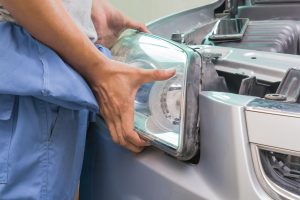Proper lighting not only ensures visibility, safety, and comfort, but also helps you catch problems early, save energy, and extend the longevity of fixtures and bulbs. A planned maintenance schedule is key — rather than waiting until something fails. This guide will walk you through how often to inspect and replace various types of bulbs (incandescent, halogen, fluorescent, LED, HID, etc.), what to look for, and best practices.
Why a Maintenance Schedule Matters

-
Preventive maintenance helps avoid sudden failures (e.g. in critical areas, outdoors, or in commercial settings).
-
Early detection of dimming, flicker, discoloration, or ballast issues can save energy and reduce downtime.
-
Some lighting types degrade gradually (e.g. fluorescent, HID), so replacement before total failure can maintain consistent brightness.
-
Safety: burned-out or flickering lights (especially in stairwells, parking lots, or outdoor paths) pose risks.
Below is a general inspection and replacement schedule. These are guideline averages; your actual schedule may vary depending on usage, environment conditions (temperature, humidity, vibration), and manufacturer recommendations.
Maintenance Schedule Table
| Bulb / Lighting Type | Inspect Every* | Replace / Service Frequency | What to Check / Notes |
|---|---|---|---|
| Incandescent / Halogen | 6 months | On failure (or annually in special cases) | Look for discoloration (blackening), filament sagging, vibration damage. |
| Compact Fluorescent (CFL) | 3–6 months | Every 3–5 years (or on failure) | Check for dimming, flicker, warm-up delays, envelope damage. |
| Linear Fluorescent (T5 / T8) | 3 months | Every 7–10 years (or earlier) | Inspect ballast (buzz, heat), tube blackening, gradual lumen loss. |
| LED (Standard / Retrofit) | 6 months | Every 10–20 years (or earlier) | Check for flicker, driver heat, color shift, dimming, optical degradation. |
| High-Intensity Discharge (HID): Metal Halide, HPS, etc. | 3 months | Every 6–10 years (or earlier) | Check ballast, arc stability, lamp cycling behavior, lumen depreciation. |
| Outdoor / Street Lighting | 3–4 months (spring / fall) | Every 5–12 years (depending on tech) | Inspect seals, lenses, corrosion, moisture ingress, fixture optics. |
| Specialty lamps (e.g. UV, grow lights, MR16 halogen) | 3–6 months | As per manufacturer (often 1–3 years) | Watch spectral degradation, color shift, coverage. |
* “Inspect” refers to a visual and operational check—not full replacement.
Inspection Checklist & What to Look For
When you inspect lighting, use the following checklist. You can adapt it to your facility, home, or installation.
Inspection Checklist:
-
Visual condition
-
Cracks, chips, or discoloration of bulb or lamp envelope
-
Blackening or dark rings near the ends of tubes
-
Signs of overheating: melted plastic, scorching, smoke residue
-
-
Operational behavior
-
Flicker or strobing, especially during warm-up
-
Slow start or delayed illumination
-
Dimming or noticeable lumen drop
-
Lamp cycling on/off (especially in HID or fluorescent)
-
-
Thermal / Heat / Driver performance
-
Overheating of drivers, ballasts, or fixtures
-
Excessive temperature rise versus rated spec
-
Check for buzzing, vibration, hum
-
-
Electrical & socket integrity
-
Loose contacts, corrosion in sockets or connectors
-
Proper seating and alignment
-
Check for voltage drop, wiring insulation damage
-
-
Environmental factors
-
Moisture ingress, dust or dirt accumulation
-
Vibration or mechanical stress
-
UV exposure or chemicals (e.g. corrosive gases)
-
-
Photometric / Output checks (optional but useful)
-
Measure lux or lumen output periodically
-
Compare to baseline or manufacturer spec
-
Evaluate uniformity in installations
-
-
Record keeping & trend tracking
-
Log inspection date, results, any abnormalities
-
Note cumulative hours / cycles on lamp or ballast
-
Track gradual decline or repeated failures
-
Replacement Guidelines & Best Practices
-
Replace before full failure: For lights in critical zones (emergency exits, corridors, outdoor zones), don’t wait until full burnout. Use the recommended service life fraction (e.g. replace at 70–80% of rated life).
-
Use matched lamp sets: In multi-lamp fixtures (e.g. 2×T8 tubes), replace pairs together to maintain uniform brightness.
-
Install quality drivers / ballasts: A good driver can prolong LED or HID life. Use models rated for your environment (temperature, humidity, surge protection).
-
Consider design life & L70 metrics: Especially for LEDs, manufacturers often quote L70 (time until output drops to 70% of initial lumens).
-
Use timers / sensors / dimming wisely: They can reduce hours of operation and extend bulb life.
-
Spare stock & cross-referencing: Keep a small inventory of bulbs or LED modules (same color, wattage) to avoid disruptions.
-
Avoid frequent on/off cycling: Some lamps (fluorescent, HID) have life degraded by frequent switching. Use warm-start or soft start if possible.
Sample Maintenance Timeline (5-Year Cycle)
Below is a sample schedule you might adopt for a commercial facility or large building, to illustrate how inspections and replacements interplay over time.
| Year | Major Actions |
|---|---|
| Year 1 | Baseline full inspection, replace early failing lamps, clean fixtures, record output |
| Year 2 | Quarterly inspections (3, 6, 9, 12 mo), replace marginal/inconsistent lamps |
| Year 3 | Mid-cycle review: photometric audit, prepare bulk replacements for aging units |
| Year 4 | More frequent inspections (every 2–3 months), begin widespread replacement of older units |
| Year 5 | Full replacement of units that have exceeded useful life or are trending down steeply; reset baseline |
You may then repeat or adjust based on observed failure rates and environmental stresses.
Bulb Types: Special Notes & Replacement Cues
-
Incandescent / Halogen
Simple and cheap. They tend to fail suddenly—so inspection is mainly visual. Replace when burnt out or when discolored/hot spots appear. -
Compact / Linear Fluorescent (CFL / T5 / T8)
They gradually lose brightness and may flicker or take time to warm up. Frequent cycling shortens life. The ballast is often a weak point. If lamps show black end-rings or frequent starting failures, replace before full burnout. -
LED Lighting
Most durable but subject to driver or thermal failures. Also watch for color temperature shifts (e.g. green or purple tint) and lumen depreciation. Even if still lit, a dim LED may be due for replacement if performance is unacceptable. -
HID / Metal Halide / High Pressure Sodium / LPS
After many hours, the lamp’s lumen output degrades. Many HID lamps enter a “cycling” mode before failure (on/off). When that begins, plan to replace. Also inspect and possibly replace the ballast. -
Outdoor & Street Lamps
These often run many hours and face harsh elements. Inspect lenses, seals, fixture corrosion, insects, bird droppings, dirt. Even if the lamp is okay, the optics or cover might degrade light distribution and should be cleaned or replaced.
Summarizing Best Intervals by Use Case
-
Residential / Home Use
Inspect lighting fixtures at least twice a year (spring and fall). Replace bulbs as they fail; for LED, aim to switch when performance declines. -
Office / Commercial Interiors
Quarterly or semiannual inspections. Replace fluorescent or LED modules before they cause noticeable drop in brightness in work areas. -
Industrial / Warehouse
Frequent inspections (every 2–3 months). Large footprint and safety zones demand consistent lighting. HID and LED modules may be on 24/7, so replacement cycles are more aggressive. -
Outdoor / Street / Parking
Schedule inspections seasonally (pre-winter, pre-summer). Replace aging lamps and clean optics, especially in areas with salt, dust, or weather stress.
Example: LED vs Fluorescent Maintenance Comparison
| Feature | LED | Fluorescent |
|---|---|---|
| Typical lifetime | 50,000–100,000+ hrs | 20,000–30,000 hrs |
| Degradation mode | Gradual lumen drop, driver failure | Dimming, flicker, blackening, ballast failure |
| Sensitivity to cycling | Low | High (frequent on/off shortens life) |
| Warm-up time | Instant | Several seconds to warm full brightness |
| Maintenance frequency | Lower | Higher |
Tips for Efficient Maintenance Programs

-
Use preventive replacement rather than reactive.
-
Group lighting zones and prioritize critical areas (eggress, safety).
-
Incorporate photometric measurements occasionally to quantify degradation.
-
Use smart lighting controls (dimmers, occupancy sensors) to reduce hours and stress.
-
Keep records and trend graphs to anticipate failures rather than chase them.
-
Train maintenance personnel to spot early warning signs (glow, flicker, color shift).
Conclusion
A disciplined maintenance schedule ensures safe, effective, and economical lighting over time. While some bulbs (like incandescent) typically fail abruptly, others (fluorescent, HID, LED) degrade gradually — giving you warning signs you can act on if inspections are regular. Tailor your schedule to bulb type, usage, environment, and criticality.
If you’re looking for lighting products or replacements, you can check options and accessories at Buy Car Lighting online.
By planning ahead, inspecting proactively, and replacing at the right times, you’ll preserve brightness, save energy, reduce downtime, and make the most of your lighting investment.